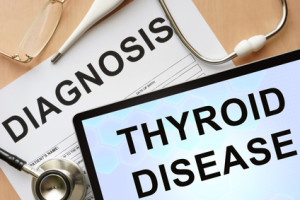Exposure to EDCs (endocrine-disrupting chemicals) in daily household
 People usually feel safe from all hurdles and chemical of the outside world in their homes. But have you wondered how safe you are at your home? How you are not prone to any chemicals that may cause severe damage to your health? Well, it is believed to be a myth by some people but we all are subject to that very problem in our everyday life and it is destroying our health bit by bit.
People usually feel safe from all hurdles and chemical of the outside world in their homes. But have you wondered how safe you are at your home? How you are not prone to any chemicals that may cause severe damage to your health? Well, it is believed to be a myth by some people but we all are subject to that very problem in our everyday life and it is destroying our health bit by bit.
From detergents to food packaging, common household items may be exposing you and your family to chemical health hazards. Indoor environments are therefore increasingly understood as important contributors to exposures for a wide range of pollutants. Chemical concentrations are often greater indoors than outdoors due to multiple indoor sources and limited chemicals degradation and ventilation indoors.
Endocrine disruptors are chemicals that may interfere with the body’s endocrine system, (thyroid, hormones) and produce adverse developmental, reproductive, neurological, and immune effects in both humans and wildlife. A wide range of substances, both natural and man-made, are thought to cause endocrine disruption, including pharmaceuticals, dioxin and dioxin-like compounds, polychlorinated biphenyls, DDT and other pesticides, and plasticizers such as bisphenol A and they can be found in everyday products including plastic bags, toys, cosmetics and pesticides.
system, (thyroid, hormones) and produce adverse developmental, reproductive, neurological, and immune effects in both humans and wildlife. A wide range of substances, both natural and man-made, are thought to cause endocrine disruption, including pharmaceuticals, dioxin and dioxin-like compounds, polychlorinated biphenyls, DDT and other pesticides, and plasticizers such as bisphenol A and they can be found in everyday products including plastic bags, toys, cosmetics and pesticides.
Types of EDCs
All of us are exposed to chemicals with adverse effects in everyday life that include EDCs (endocrine-disrupting chemicals) and the commonly detected in people are DDT, Bisphenol A, diphenyl esters and phthalates. The main types of EDCs that we are exposed to from our daily routine stuff in our houses are
- Xenoestrogens – these are type of xenohormones that are structurally and functionally similar to estrogen and they are widely used in industrial compounds which have estrogenic effect on living organisms
- Alkylphenols – these are also classed under xenoestrogens. There are several countries that have implemented sales and use restrictions on certain applications of alkylphenols due to their toxicity.
- Bisphenol A
- Bisphenol S
- Polybrominated diphenyl ethers (PBDEs)
- Phthalates
What can EDCs do to your body?
EDCs are essentially harmful to your body and their existence can cause extremely severed effects and mutations on cellular level to alter our body’s normal functions. Here are some potentially hazardous effects of EDCs:
- Prenatal exposure to EDCs can harm the developing nervous system, leading to behavioral and cognitive problems as well as impaired motor functions.
- They can cause changes in male reproductive system that may be abnormal shape or number
 of the sperms per ejaculation or possibly infertility.
of the sperms per ejaculation or possibly infertility. - Exposure to certain EDCs causes an increased risk of allergies.
- Bisphenol A exposure can increase a person’s risk of developing behavior problems, obesity and diabetes, heart disease, and impaired liver function later in life.
- Triclosan, which is a substance found in soaps, toothpastes and detergents is known to be hazardous to your health especially skin or surfaces of the body that are not normally exposed.
How to minimize their effect?
There are a lot of safe steps that you and your family can take to limit your exposure to EDCs and prevent the cause of their severe effects on your body.
- Keep the dust in watch because it is the key to all essentially harmful EDCs that accumulate in household dust and can reach your body easily. Keep surfaces dust-free by using a moist cloth to clean them.
- EDCs can accumulate in fat, so buy low-fat dairy products and avoid high-fat animal products. Eat fresh or frozen fruits and vegetables, and avoid canned and processed foods.
- Don’t warm your food in the microwave in plastic containers; rather use glass, stainless steel, ceramic, etc.
- Educate people around you on how they can keep themselves away from harmful effects of EDCs.
Stay healthy by choosing the right cleaning products. We offer classes to help you decide what is best for your health. You may also check into having a Functional Thermogram done to find out the toxicity level of your body. See your calendar for classes.
Johanna Oosterwijk ND